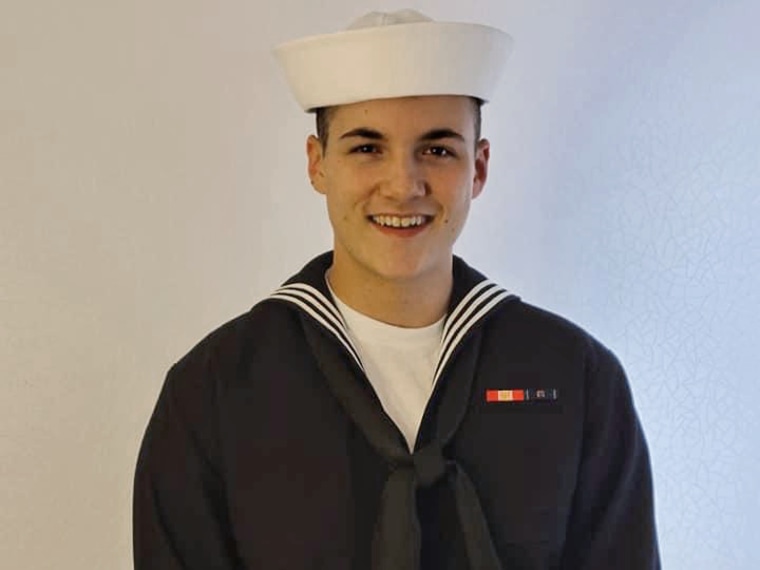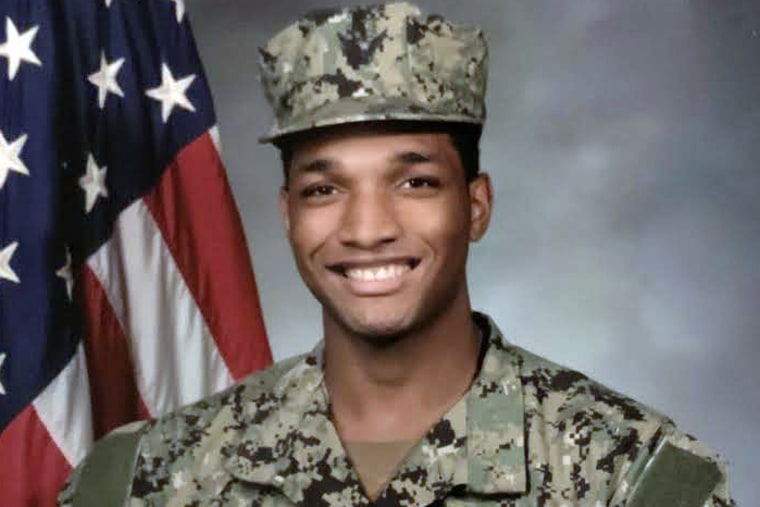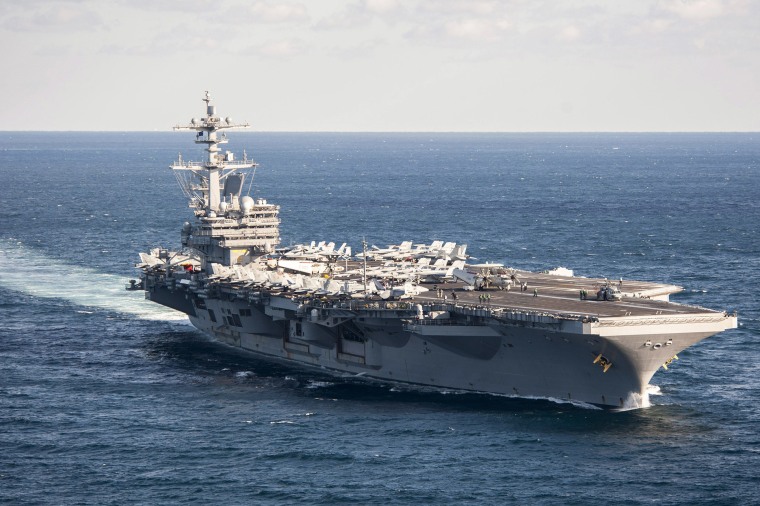As her one-year anniversary with the Navy approached last May, Hannah Crisostomo swallowed 196 pain relievers. Her organs shut down. Her brain swelled during multiple seizures and she stopped breathing.
She was on life support for eight days, during which time doctors had warned her family that she may never regain normal brain functions. When Crisostomo woke up, she immediately wondered why she was still alive. Her thoughts grew more despairing during the next few weeks in the hospital and then in the Navy’s psychiatric ward.
“If they keep me in the Navy, and they put me back in the same situation, I’m going to kill myself,” she recalled thinking, “and I’m going to be successful the next time.”
That spring, Crisostomo, an aviation boatswain’s mate handler on the aircraft carrier USS George Washington, had been moved to night-shift repair duties. Amid disorganization on the ship during an extensive overhaul, Crisostomo said she was constantly berated for things out of her control.
Hannah Crisostomo holds her Navy portrait.Alex Welsh for NBC News
At the time, she was dealing with some family issues. She also said bipolar disorder that went undiagnosed had played a role in her decision-making. But Crisostomo, now 20, said 95 percent of the reason she tried to kill herself was work-related.
“The command pushes you to that point,” she said, adding that she had tried to get help but was belittled instead. And unlike a traditional corporate employee, she could not simply quit because she had signed a five-year contract.
“There is no putting in your two-week notice and getting out,” Crisostomo said.
Crisostomo and several other George Washington sailors said their struggles were directly related to a culture where seeking help is not met with the necessary resources, as well as nearly uninhabitable living conditions aboard the ship, including constant construction noise that made sleeping impossible and a lack of hot water and electricity.
Since Crisostomo’s attempt, at least five of her shipmates on the George Washington have died by suicide, including three within a span of a week this April, military officials said. The latest cluster of suicides is under investigation by the Navy and has drawn concern from the Pentagon and Rep. Elaine Luria, D-Va., who served in the Navy for two decades.
On April 15, Master-at-Arms Seaman Recruit Xavier Hunter Sandor died by suicide onboard the George Washington, according to the Navy and the state chief medical examiner’s office. He had been working on the warship for about three months, his family said.
 Xavier Hunter Sandor.Courtesy John Sandor
Xavier Hunter Sandor.Courtesy John Sandor
His death came five days after Natasha Huffman, an interior communications electrician, died by suicide off-base in Hampton, officials said.
The day before, Retail Services Specialist 3rd Class Mika’il Rayshawn Sharp also died by suicide off-base in Portsmouth, said his mother, Natalie Jefferson.
“Three people don’t just decide to kill themselves in a span of days for nothing,” said Crisostomo, who left the Navy in October 2021, on an honorable discharge with a medical condition following her suicide attempt.
In a statement, the Navy said, in part, that it was a “resilient force,” but “not immune from the same challenges that affect the nation that we serve.”
“We remain committed to ensuring our carriers are manned, trained and equipped to optimal levels including embedded mental health providers,” said Rear Adm. John F. Meier, the commander of Naval Air Force Atlantic.
 Mika’il Rayshawn Sharp.U.S. Navy
Mika’il Rayshawn Sharp.U.S. Navy
Several sailors said poor working conditions were exacerbated by the fact that since 2017, the USS George Washington, one of the world’s largest warships, has been docked at the Newport News Shipyard in Virginia, where it’s undergoing a multiyear overhaul. Such an overhaul is done once during a carrier’s 50-year service life, the Navy said, and it includes significant repairs and upgrades, and the refueling of the ship’s two nuclear reactors.
While most of the roughly 2,700 sailors go home after their shifts, hundreds who live out of state or don’t have off-site housing stay on the George Washington, where they endure nearly uninhabitable conditions, according to a sailor, who still works on the warship and asked to remain anonymous out of fear of retaliation.
Constant construction made it difficult for sailors to fall asleep after long shifts. So some sailors, including Xavier Sandor, slept in their cars, according to Sandor’s shipmates and his father.
“They’re living in an active construction site, and half the boat is not livable at all,” the sailor said. “They don’t care about you trying to sleep.”
When he wasn’t working 12-hour night shifts on the George Washington, Sandor stayed in his car, where he kept a thick blanket and his clothes, according to his father, John Sandor.
During these overhauls, according to several sailors, most crew members are relegated to clean-up and repair tasks rather than the jobs they enlisted in the Navy to do. In her role, Crisostomo was originally supposed to help direct aircraft on the vessel. But because the ship was docked, she spent most of her workdays painting and doing other handiwork.
“We’re glorified janitors,” she said.
A second sailor who asked to remain anonymous out of fear of retaliation said he spent nearly two years sitting on a bucket with a fire extinguisher, watching other sailors weld, instead of directing aircraft on the carrier. That sailor, who was reassigned off the George Washington less than a year ago because of an injury, said he felt depressed during his time on the warship and lost over 80 pounds.
 The USS George Washington during its mission in the eastern Mediterranean Sea in 2017.USS George H.W. Bush via Getty Images
The USS George Washington during its mission in the eastern Mediterranean Sea in 2017.USS George H.W. Bush via Getty Images
“It’s a lot of stress and pressure, especially for people straight out of boot camp,” he said. “It’s mentally scarring to go through stuff like this.”
In a recent address to the George Washington crew, Master Chief Petty Officer of the Navy Russell Smith, the service’s senior enlisted leader, told crew members that he knew their working conditions during the overhaul were “not pleasant” or easy, and he acknowledged there was a suicide problem.
“Beating suicide is like beating cancer,” he said, according to a transcript of the address, released Monday by the Navy. “There are many different causes, many different reasons.”
Smith disagreed when a sailor said living standards on the ship were not “necessarily up to par.” He said that the sailors get to go home most nights and that they were not “sleeping in a foxhole like a Marine might be doing.”
“I think we probably could have done better to manage your expectations coming in here,” Smith said. “I hear your concerns and you should always raise them, but you have to do so with reasonable expectations.”
He said the overhaul should be complete in less than a year.
In a statement to NBC News, Lt. Cmdr. Robert Myers, a Navy spokesman, said a “certain number” of sailors have to stay on the ship to run essential equipment, maintain fire and flooding watches, and secure the vessel. The Navy has directed leaders on the ship to identify sailors who could benefit from morale and personal well-being programs, Myers said.
Nautica Robinson, 23, a former fire controlman who worked with Huffman on the George Washington, agreed that overhaul periods affect workloads, increase stress and cause sailors to work longer and harder to make up for schedule delays that are out of their control, as well as keep them from being deployed at sea. But she said the root of the problem is not the shipyard, or the ship itself, but “toxic leadership” on the George Washington.
“They just threw us back in the environment, like our attempted suicides didn’t happen,” Robinson said. “The things that pushed those sailors overboard didn’t exist.”
When Crisostomo first had suicidal thoughts about half a year into her tenure, she said she sought help from a superior. But Crisostomo said she was told she had to finish her work and seek help on her own time. Crisostomo worked night shifts, so by the time she had finished her duties, she said there was no one around to ask.
“Being in the Navy was all I ever wanted,” said Crisostomo, who enlisted when she was 17. “I wanted to be part of something big to help the country. I got robbed of that, and I didn’t deserve it.”

